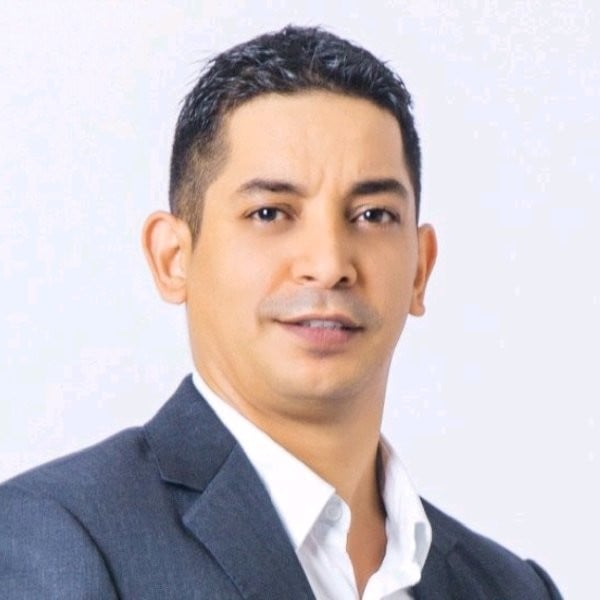Navigating the U.S.-China Tariff Hikes: The Case for Supply Chain Diversification in Asia
The recent U.S.-China tariff hikes, including substantial increases on critical imports such as electric vehicles (EVs), batteries, solar cells, and semiconductors, mark a pivotal moment in global trade dynamics. These moves, part of a larger geopolitical strategy, underscore the U.S. administration’s aim to reduce reliance on Chinese manufacturing while protecting key domestic industries. The impact is already being felt across the global supply chain, but these changes present an opportunity for businesses to diversify their sourcing strategies and explore alternative hubs across Asia.
At Asia Agent Pte Ltd, we understand that navigating these shifts requires an agile and proactive approach. Our team is positioned to help businesses transition from a reliance on China and build resilient, cost-effective supply chains in emerging markets like Vietnam, India, and Bangladesh.
The Tariff Hikes: Background and Strategic Intent
The Biden administration’s decision to raise tariffs on Chinese goods represents the culmination of years of escalating trade tensions between the U.S. and China. This new wave of tariffs targets some of China’s most critical exports, including:
100% tariffs on electric vehicles (EVs) imported from China, making it significantly more expensive to bring Chinese EVs into the U.S. market.
50% tariffs on semiconductors, including new categories like silicon wafers and polysilicon, which are essential for electronics and solar panel production.
25% tariffs on lithium-ion EV batteries and key minerals necessary for the production of electric vehicles.
These tariffs build on measures first imposed during the Trump administration, which had targeted over $300 billion worth of Chinese goods across various sectors. The Trump-era tariffs ranged between 7.5% and 25% and affected products as diverse as textiles, electronics, and industrial machinery.
The current administration’s tariffs are not just about increasing costs on Chinese imports—they are designed to force a strategic decoupling between the two economic giants, particularly in industries that the U.S. views as critical to its technological future. Industries like electric vehicles, clean energy, and semiconductors are at the forefront of this geopolitical battle, with both countries vying for dominance in these cutting-edge sectors.
Key Strategic Reasons Behind the Tariff Hikes:
Protection of U.S. Technological and Industrial Sectors: The tariffs target sectors where China has become a dominant global player, particularly in EVs and semiconductors. By imposing steep tariffs on these products, the U.S. hopes to protect its domestic manufacturers and reduce dependency on China for essential components and technology.
Countering China’s Industrial Policies: The Biden administration has emphasized the need to counter China’s state-driven industrial subsidies, which have enabled Chinese companies to flood global markets with cheap goods, undermining competitors in other countries. These tariffs are designed to level the playing field by making it harder for Chinese companies to continue benefiting from state support.
Bolstering U.S. Supply Chain Resilience: The COVID-19 pandemic exposed the vulnerabilities in global supply chains, particularly those that relied heavily on Chinese manufacturing. The new tariffs are part of a broader strategy to encourage domestic manufacturing, diversify supply chains, and reduce U.S. dependence on foreign suppliers for key technologies like semiconductors and EV components.
Why the Tariff Hikes are Disrupting Global Supply Chains
The U.S.-China tariff hikes have created widespread ripple effects, causing disruptions in supply chains that extend far beyond the U.S. and China. Here's why:
Rising Costs for U.S. Importers and Consumers: The immediate effect of these tariffs is the increased cost of goods imported from China. For businesses that rely on Chinese manufacturing, the steep hikes in tariffs are forcing difficult decisions—either absorb the higher costs or pass them along to consumers. For example, a 100% tariff on electric vehicles could double the cost of importing EVs, significantly eroding profit margins or leading to higher prices for consumers.
Impact on Critical Technologies: By targeting industries like semiconductors, solar cells, and EV batteries, the tariffs are hitting at the heart of the global technology supply chain. These components are not just essential for consumer electronics; they are also key to emerging industries like electric vehicles, renewable energy, and artificial intelligence. With tariffs as high as 50% on semiconductors, manufacturers across multiple sectors are feeling the strain as they scramble to find alternative sources for these critical components.
Pressure on Chinese Suppliers: Many Chinese suppliers rely heavily on U.S. demand for their products. With these new tariffs in place, some suppliers may find it difficult to maintain profitability, leading to factory closures or reduced production capacity. This puts businesses that source from China at increased risk of supply chain disruptions as their suppliers struggle to stay afloat.
Decoupling and Diversification: One of the intended effects of the tariffs is to encourage U.S. companies to decouple from Chinese manufacturing and seek alternatives in other parts of Asia or beyond. This decoupling process is already underway, with many companies looking to diversify their supply chains by shifting production to countries like Vietnam, India, and Bangladesh, which offer competitive advantages in labor costs and access to growing regional markets.
Why Supply Chain Diversification is Crucial Now
The U.S.-China tariff hikes are not a temporary measure; they reflect a long-term strategic shift in global trade dynamics. Businesses that continue to rely solely on China for manufacturing are exposing themselves to significant risks, including rising costs, supply chain disruptions, and potential political fallout.
Diversifying supply chains now is not just about mitigating risk—it’s about positioning your business for success in a rapidly changing global market. Here’s why:
Cost Savings in Alternative Markets: Countries like Vietnam, India, and Bangladesh offer lower labor costs compared to China, making them attractive alternatives for businesses looking to reduce their production expenses. These countries are also benefiting from favorable trade agreements with the U.S. and the EU, reducing tariffs on exports and making it more cost-effective to manufacture outside China.
Access to Emerging Markets: By shifting production to countries like Vietnam and India, businesses can gain access to growing consumer markets in Southeast Asia and South Asia. These regions offer significant growth opportunities, particularly in industries like textiles, electronics, and automotive components.
Supply Chain Resilience: Diversifying your supply chain across multiple countries can help reduce the risk of disruptions caused by geopolitical tensions or natural disasters. By spreading production across different regions, businesses can ensure greater flexibility and stability in their supply chains.
How Asia Agent Pte Ltd Can Help You Transition
At Asia Agent Pte Ltd, we specialize in helping businesses navigate the complexities of transitioning their supply chains to new markets in Asia. With extensive experience in key manufacturing hubs such as Vietnam, India, and Bangladesh, we provide a seamless, cost-effective solution for businesses looking to diversify their operations.
Our Services Include:
HUB & Supplier Research: We conduct in-depth research to identify the best manufacturing hubs and suppliers for your specific needs, ensuring that you work with reliable, cost-effective partners.
On-the-Ground Support: Our local teams are based in the regions we operate, providing hands-on support for supplier verification, contract negotiations, and quality control.
Seamless Transition Planning: We offer end-to-end support in planning and executing your transition, ensuring minimal disruption to your operations and helping you realize immediate cost savings.
Conclusion: Act Now to Secure Your Future Supply Chain
The U.S.-China tariff hikes are reshaping global trade, and businesses that fail to adapt are at risk of being left behind. Now is the time to diversify your supply chain, reduce your reliance on China, and take advantage of the emerging opportunities in Asia’s next-generation manufacturing hubs.
At Asia Agent Pte Ltd, we are here to help you navigate this transition with confidence. Contact us today to learn how we can support your business in building a more resilient, cost-effective supply chain across Asia.




